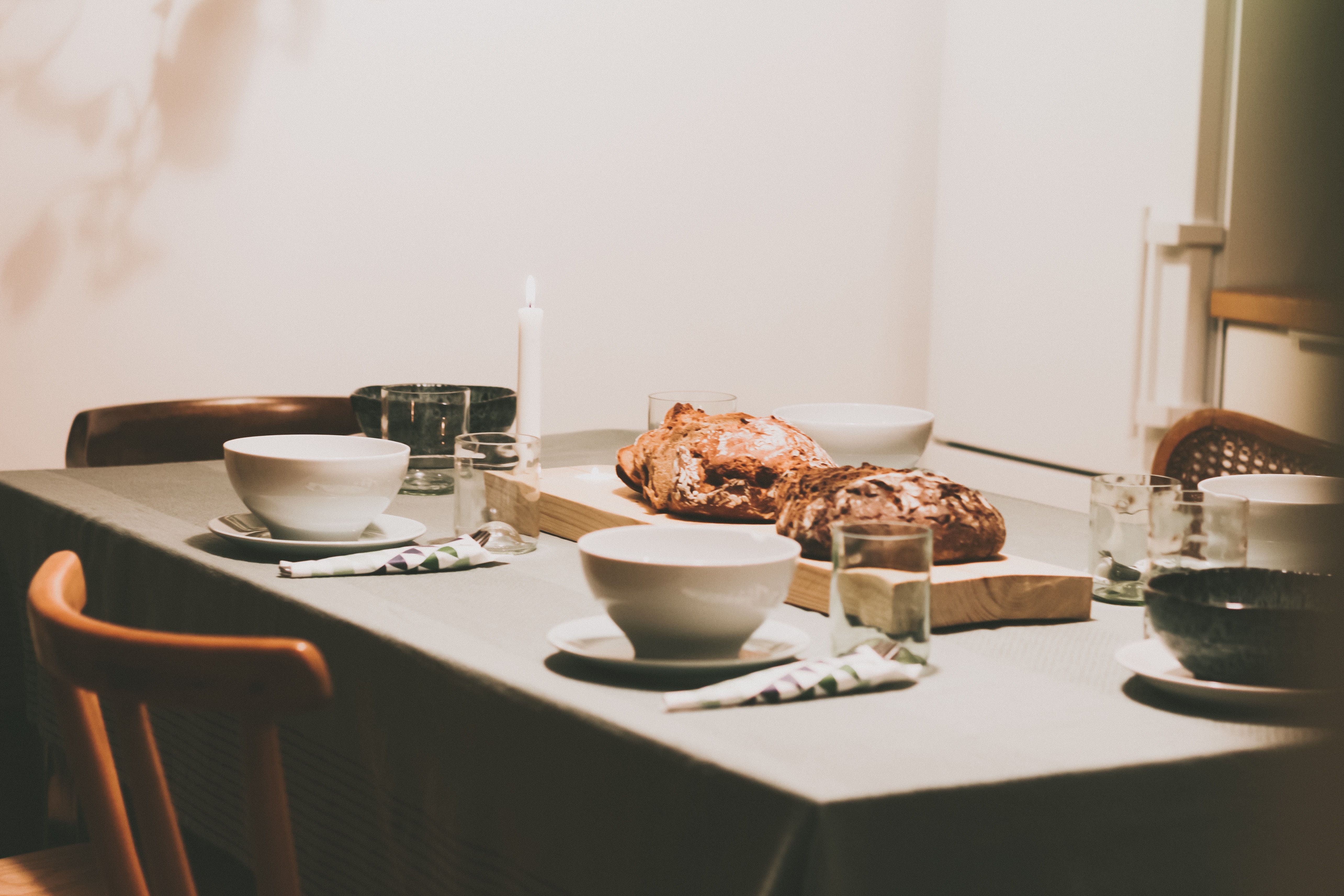The idea of gathering to eat is a somewhat fluid one. We can gather in the kitchen to graze on food options. We can gather in the living room with plates in laps. We can gather in the family room to eat in front of a screen. We can gather in a yard for a barbecue and wander around with plates in hand—or no plates at all. And any of these gatherings can contain elements of the family table. But the furniture does make a difference. When we gather around a physical table, we uniquely maximize the opportunity to create something the Bible calls koinonia.

Think about the relational dynamics of a table for a moment. First, it creates a physical unity—all who sit at the table become, in a sense, one with the table, and so one with each other while at the table. Second, the table creates an experiential unity—you are sharing an experience of food and fellowship. Third, the table fosters interaction with other people—it is natural to look into others’ eyes at a table, to engage in conversation, and to communicate nonverbally. Finally, the table becomes an anchor; it anchors everyone to a static spot and thus discourages wandering. It is hard to avoid the natural, communal dynamic of a physical table. And that in turn helps to create koinonia, which means fellowship or partnership with others.

For Christians, koinonia specifically describes the unique communion we share with others who are also “in Christ.” It shows up often in the New Testament descriptions of the early church, beginning with Acts 2:42, which describes the early church in Jerusalem as “continually devoting themselves to the apostles’ teaching and to fellowship [koinonia], to the breaking of bread and to prayer” (nasb). They “had all things in common” (verse 44, nasb) and daily were “breaking bread from house to house . . . taking their meals together with gladness and sincerity of heart” (verse 46, nasb). They were experiencing koinonia by gathering at lifegiving tables to feast with other believers.
When we gather at a lifegiving table in our home, our goal is not just to be together, but to experience koinonia—both in the general sense and in the uniquely Christian sense. We gather to be together as a family and also to connect as spiritual beings and followers of Christ. But making that happen requires a certain amount of work and attention. If there are relational problems such as anger, those need to be resolved before we gather at the table. If there are distractions—cell phones, tablets, noises from other rooms, pets—we minimize them. If there are competing schedules, we try to work around them as best we can.

Everyone in the Clarkson family has strong opinions and convictions, so it is not unusual for lively dinnertime discussions to become increasingly vociferous. When that discussion deteriorates into emotional or insensitive argument, we have to discipline ourselves to take a step back. That’s not easy, but we like to remember the time when four-year-old Joy single-handedly ended such an overly spirited table discussion about Tarzan (don’t ask). When she had had enough of the older kids’ loud discussion, she stood up, raised her arms straight into the air, closed her eyes, and proclaimed with great conviction and assertiveness, “Everybody stop! Take a deep breath, and think about Jesus.”
It worked. We had a good laugh and got back to our koinonia.
Excerpt pulled from The Lifegiving Table by Sally Clarkson.
___

The Lifegiving Table by Sally Clarkson
Make your table a place where your family and friends long to be—where they will find rest, renewal, and a welcome full of love.
Beloved author Sally Clarkson (The Lifegiving Home, Own Your Life, Desperate) believes that meals lovingly served at home—and the time spent gathered together around the table—are a much-needed way to connect more deeply with our families and open our kids’ hearts. Food and faith, mingled in everyday life, become the combination for passing on God’s love to each person who breaks bread with us.
In The Lifegiving Table, Sally shares her own family stories, favorite recipes, and practical ideas to help you get closer to the people you love . . . and grow in faith together.






